How to Train Flushing Dogs {BASICS}
Training flushing dogs can be very fun! Finding the breed of pup you want and then developing it is very rewarding. Flushing dogs are one of the three main types of gun dogs. The three types are Pointing Dogs, Retrievers and Flushing Dogs. Dogs that flush must have good noses to find scent, track their prey and then be able to forge into any kind of cover. Flusher’s must not be afraid to go into any kind of cover in which their prey may be hiding.
Depending on what kind of upland game you hunt you will want your dog to be fearless in their pursuit. Here are some tips to make training go smoothly:
- Good Breeding (Check out BuyandSellHuntingDogs.com for good flushing dog breeders)
- A pup with a desire to learn
- An ability to give positive reinforcement to your dog
- Patience
- Good Check Cord
- Training Whistle
- Training Dummy
- Pigeons or Chukars
Flushing Dog Breeders
Purchasing a pup from a flushing dog breeder will be paramount to your success. No matter what breed you chose you will be better off  getting your dog from someone who hunts with a flushing dog. Sure, with enough practice you may be able to teach your show dog to hunt. Why make it harder than it has to be. Figure out what kind of dog you want and then Browse Ads on Buy and Sell Hunting Dogs. It all starts in finding the right pup for you.
getting your dog from someone who hunts with a flushing dog. Sure, with enough practice you may be able to teach your show dog to hunt. Why make it harder than it has to be. Figure out what kind of dog you want and then Browse Ads on Buy and Sell Hunting Dogs. It all starts in finding the right pup for you.
Training Dogs with Positive Reinforcement
Positive reinforcement training for dogs is crucial to help maximize their potential to please. We aren’t saying that you shouldn’t discipline your dog, of course you should let him know if he makes obvious mistakes. But, when he does do what you desire, “Good Boy/Good Girl,” should come easily. Make sure he knows you approve. Set the tone of your voice to be reassuring and complimentary. Save the negative tone and use only as needed. Make sure if you discipline him he knows what it was for, not catching him in the moment will only confuse him.
Some examples of when you should use positive reinforcement:
- When you give him a command and he obeys such as sit, stay, fetch etc
- Whey you point to a spot and say, “check it out,” and he goes (pointing to an island of bushes that a bird might hide it)
- Finding and flushing birds
These are just a few- you get the idea. PRAISE WORKS!
Training Flushing Dogs to Quarter
One of the most important aspects of training flushing dogs is the ability to go from side to side. Start taking him out on walks where he knows to follow you and not lose you. The second step is to start taking him out to short grassy fields, a hay that is half grown is perfect. Accustom him to running around on his own for a solid month, so he can become independent and curious. Gradually walk in thicker cover. Purchase a check cord like mentioned above and take him for walks with it attached. Let him get accustomed to the check cord a time or two. Training flushing dogs is all about consistency and short periods of repetition. Do the the following at least 2-3x per week for the next month for about 15 minutes each time.
- Start at the beginning of the field (short hay field if possible) and walk in a zig -zag manner.
- Go thirty paces at 90 degrees to the right and then switch and do the same to the left
- When you get to the end of each thirty paces call his name and make a sweeping arm gesture to the the way you want him to go. You may decide to use the whistle to condition him to turn. Make sure you ALWAYS use the same amount of beeps for each turn. You don’t want to create confusion.
- Example: You make motion “Buck” to make a sweeping arm motion to the right….after thirty more paces use your arm motion to wave him to the left. Make sure he see what you want him to do and give the check cord a slight tug in the direction you want him to go.
- Make sure he knows what you want out of him..working him on the check cord is a better exercise to do at the end of the walk, than at the beginning.
- After a few weeks of doing this take him back to the hay field. Let him run free. After a period call his name and motion the way you want him to go. After 30 paces start walking in the diagonal direction. Using a training collar on a VERY low setting may help in getting his attention at time in his raining routine.
- Continue to practice like this by adding some pigeons or chukars etc. Don’t dizzy the bird to much – you don’t want him to catch the bird.
- Gradually work a blank gun into this equation as long as you have taken the precaution of conditioning him to not be gun shy.
- Work on retrieving in the field with the training dummy’s on each hay field. Do this three or four times per walk. Keep him hungry! for more.
- Find someplace where you can take a real gun and gradually start shooting some of the birds you plant.
- Start introducing him to thicker cover and if their are two edges in the field of two different covers condition him to work back and forth to each one. Use your hand motions when needed. Don’t overdo it.
- If you have a friend or family member invite them to go with you. Have the dog work back and forth between the two of you.
- Start planting the birds in a type of thicker cover that acts like an island in the middle of the field and quarter the dog back and forth into until he gets it.
- Final thoughts – get a group of hunting buddies together and go to the Pheasant Preserve. Ask that the birds be planted in a diagonal pattern. Ask that each bird have a bright ribbon tied at the top of the grass so you can see it. Work the dog in a diagonal manner so he can find them. Repeat as often as possible. ALWAYS TRY TO WORK HIM INTO THE WIND!!!
Have fun in the field – training flushing dogs is a blast – don’t make it work!
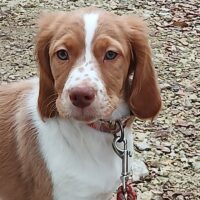
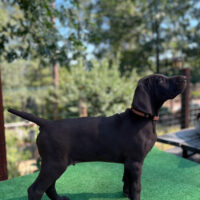

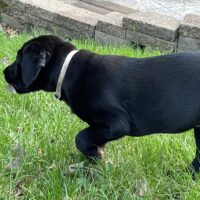


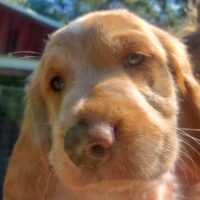
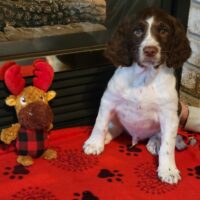
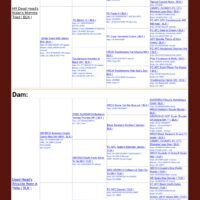
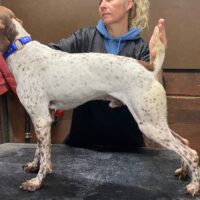

Speak Your Mind